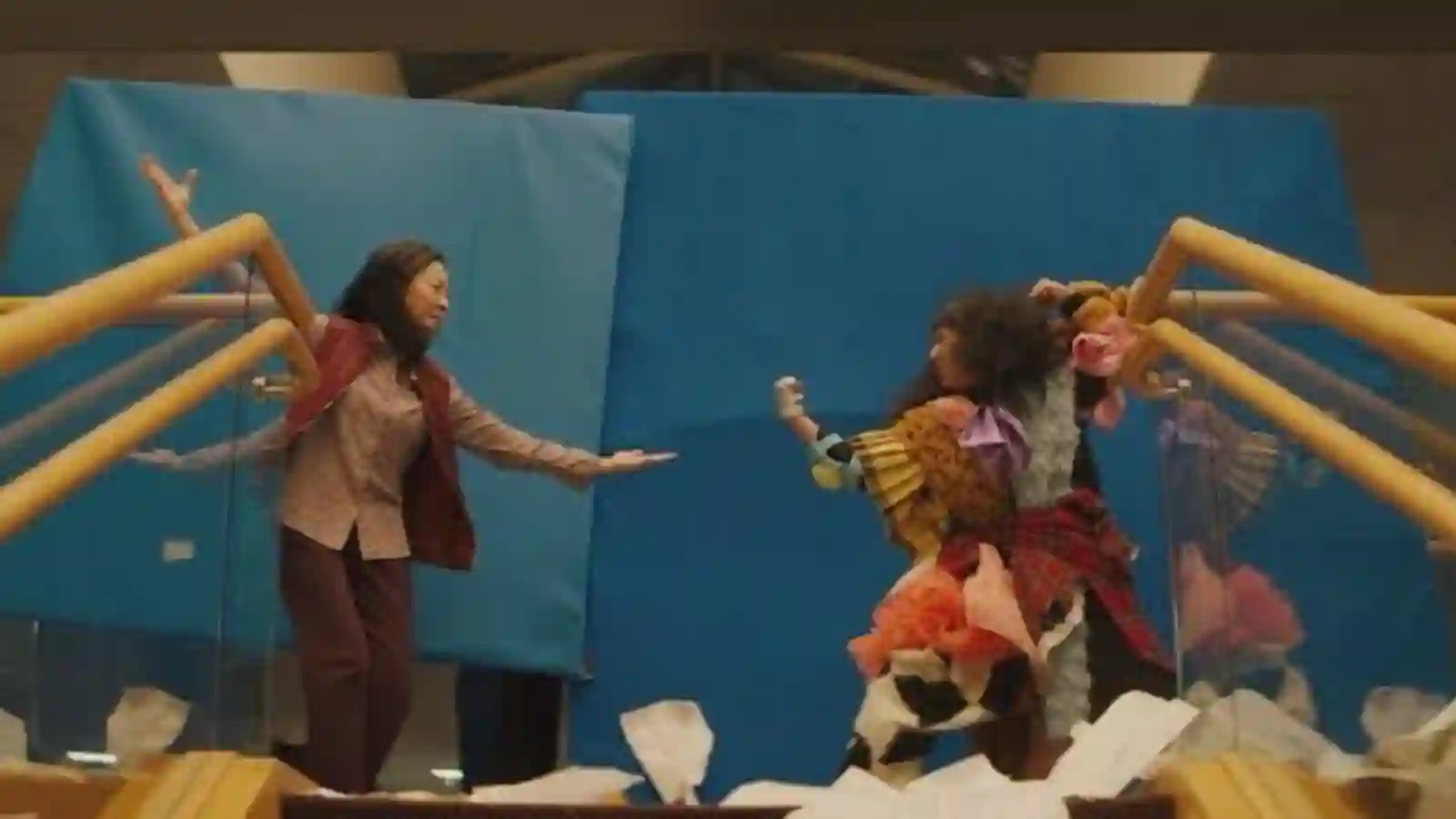Since the pandemic restrictions are not strict, the film festivals have begun in full swing. All the major film festivals like Cannes, Venice, Toronto, Sundance Film Festival, and many others saw a great number of audience presence. The directors brought a variety of narrative to the table with the big names and emerging talents. Cate Blanchett starrer ‘Tár’ has made a great buzz at all film festivals. Another film that has catched the attention, applause, and accolades at the film festivals is ‘Everything Everywhere All At Once’. The Michelle Yeoh-starrer is a quirky fantasy comedy film talking about a multiverse.
The film first premiered at ‘South By Southwest’ in Austin, Texas. It was released on March 25th, 2022, at the theaters during the Oscars 2022 week. It is a story about a Chinese immigrant couple living in the USA, who owns a failing laundromat business. Later, the husband Waymond Wang (Ke Huay Quan) introduces his wife, Evelyn Wang played by the slick Michelle Yuoh. There was a lot of buzz around the film with predictions going strong for Oscars in the Feature Film and Visual Effects category. But, the Oscars 2023 nominations have snubbed the film from the ‘Best Visual Effects’ category.
Read More: CGI Artists Claim That Marvel Has Probably The Worst Methodology Of Production And VFX Management
How Did the Visual Effects Of ‘Everything Everywhere All At Once’ Come About?

The multiverse sequence in ‘Everything Everywhere All At Once’ is one of the well crafted sequences in recent times. The slick scenes like the video effects during Evelyn’s alternate life sequence in China, where she becomes a martial arts superstar are well done. It is the 80s aesthetics that the filmmakers and the visual effect artist Zak Stoltz and his team wanted. They aimed to get high-concept aesthetics with the cheap computer-based visual effects. The liveliness of the multiverse is all credit to the Visual Effects team. During an interview with the IndieWire, Zak talked about how he and his team created the visual effects with budget and time constraints.
To do so, the team settled for a near-perfect shot throughout the entire process. He said, “We wanted to make sure everything was a solid B first, then if we had the time we could go back and take things to the A or A+ level as needed and desired. With so many effects and so few people and so little money and time, you have to prioritize certain things and be strategic about asking where the diminishing returns come in. It wasn’t just go until it’s perfect — it was go until it’s good enough, and then let’s choose the things that we want to make perfect”.
Zak and his team never worked on a feature film before. They have worked on music videos and short films. Stoltz is an old friend of Daniels. The two directors approached him after their bitter experience with ‘Method Studios’ for the visual effects of their 2016 film ‘Swiss Man Army’. So, they went with Stoltz and the team for the visual effects that made the film interesting during the falling premise. The team intended to have ‘less Marvel and more Ghostbusters’ in terms of effects.
He continued, “We ended up using CG very sparingly for a couple reasons. One, we aren’t the best at it. And two, it didn’t end up being necessary for most things. The motto was less Marvel, more ‘Ghostbusters'”.
Read More: Disney Reveals First Glimpse Of Avatar 2 At The CinemaCon Event
Twitter Is Fuming Over The Best Visual Effect Snub By The Academy

Zak talked about the reference point and the techniques they executed for the film. He continued, “Feldbau looked to another ’80s classic as a reference point as well. I brought up ‘Who Framed Roger Rabbit’ often because that’s a film that gives body and weight and dimension to hand-drawn illustrated characters. They didn’t have high-end fancy computers. They just had a human brain and an eye for light and shadow and drop shadow and animation and motion”.
This has infuriated the audience online, because substandard films like ‘Doctor Strange in the Multiverse of Madness’ got nominated over this film in the Best Visual Effects category.
RRR, Everything Everywhere All At Once, and Goodnight Oppy missing the VFX shortlist in place of Fantastic Beasts and Jurassic World is why we need new rules for this shortlist process. Small/international/documentary teams missing for big giant (derided) blockbusters. https://t.co/bZgIwsXTi6
— Dancin' Dan in Winter WonderLand (@dancindanonfilm) December 21, 2022
Put me in coach but I'm freaking ready to fight for the honor of the tiny ragtag team of indie visionaries who made the Everything Everywhere All at Once multiverse 100x more appealing than the VFX army that made the boring DSMOM.
— Alex. (@normelpeople) December 22, 2022
‘everything everywhere all at once’ didn’t even get a look-in for the academy award for visual effects
but ‘doctor strange in the multiverse of madness’, which contains such VFX tragedies as this clone-tooled mess of a third eye, is on the shortlist
nah, what a joke pic.twitter.com/rVGwJ7CrGa
— jeeves (@jeeveswilliams) December 22, 2022
Bummed to see EVERYTHING EVERYWHERE ALL AT ONCE left off the VFX shortlist… that film had terrific effects on a limited budget and deserved an EX MACHINA-like run at the top prize
— Kyle Buchanan (@kylebuchanan) December 21, 2022
Almost all of Everything Everywhere All At Once's vfx were done by a team of 5 people who self-taught themselves with YouTube videos.
Nominating 2 Marvel movies over them is some top-tier malarky. https://t.co/ohmB8w0DNx
— Alex Kulak (@AlexKulak2) December 21, 2022
Read More: Why ‘Avatar’ Led People Into ‘Post Avatar Depression Syndrome (PADS)’?






